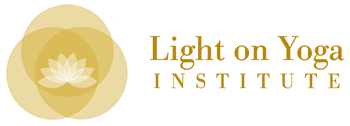the path to teaching in the Iyengar lineage
“Yoga is an art learned by practicing, but it is used as a science while teaching. Teaching requires technical words to express precisely that which has been experienced. The human body has an infinitely complex structural formation. It has about 300 joints, 700 muscles, 6000 miles of nerves and 60000 miles of blood vessels contained within a structure just 5 or 6 feet high. It has numerous organs, plexuses and glands functioning in a coordinated way. In addition, the exact structure of each individual differs. Hence a study of anatomy and physiology is essential to obtain a scientific background to the physiological formation of the asanas, so that knowledge gained by experience and observation can be translated into words...In the art of teaching yoga, the teacher encourages the pupil to think and feel for himself, explore the body and experiment with the postures, study life and nature, delve deeply into yoga and it’s philosophy of life.”
for those seeking mentoring in teaching yoga
prerequisites & expectations
“To become a teacher, one must undergo studentship for a long period of time. Just because one may do well with asanas, it does not mean they can become good teachers. There is a vast difference between learning and teaching. While teaching others, our own experience should guide us. So if we teach without experiencing Asana and Pranayama ourselves, we will go wrong.”
minimum REQUIREMENTS:
weekly study (for local students) at public classes with Jennifer Beaumont. Attendance should be at one class at your level (minimum) and one class at the level at which you will be assessed, either as a student or assistant.
attendance at IYCGR Intensive weekends for local & out of town students.
dedicated, clear commitment to Iyengar yoga
You must have three years minimum of study in the Iyengar method and have been taking a weekly class with a Certified Iyengar Yoga Teacher (CIYT) these years. (Exceptions for the weekly class requirement are for those who do not have regular access to an Iyengar teacher.)
daily home practice of asana & pranayama
expect to apprentice & mentor for at least three years before applying for Intro I & II assessment (six years absolute minimum before assessing, most take much longer)
“Teach what you know. Don’t teach what you don’t know.”
“I teach from the heart, not the head.”
“Teaching is a difficult art, but it is the best service you can do for humanity.”
“If you wish to help others through the healing power of yoga, you have to put yourself at the service of the art and through experience gain understanding.”
“”Yoga is a natural science. When people learn quickly, they do not realize the obstacles and may end up hurting themselves. One should not be in a hurry to make everyone a teacher. Yoga is not a race. It is an experiential science. It is a lifelong process and not a short term course.”
“Becoming an Iyengar teacher takes hard work and tremendous commitment but it is ultimately transformative and rewarding.”
“Knowledge is always something that is universal. It is not meant for one person. When knowledge goes in the right direction and ignorance is removed it takes all of us in the same direction. So I learn when you learn. When you feel and you understand, that gives knowledge to me. In a similar manner when I give knowledge to you, you also start to understand.”
“Teachers cannot be produced mechanically. Unless one has an inner tendency to teach they cannot be good teachers. The inner tendency blossoms over a period of time in the company of a suitable teacher. Guruji always emphasized mentorship.”
“Wherever a helping hand is needed, the teacher should come forward and help patients and students. Teachers should know how to touch and help the students”
RECOMMENDATIONS
Have a daily practice that includes inversions (Sirsasana, Sarvangasana, Halasana, Setu bandha sarvangasana).
Study and learn the complete names of all the basic poses in Sanskrit and English.
Immersion in Iyengar method
weekly, attend at least one class with your mentor at your level, and also at least one class at beginner's levels (and eventually observe & assist those classes)
Attending & Assisting Gentle & Restorative yoga for the experience of understanding how to address common problems with sequences and modifications of āsana.
Study these following references: Light on Yoga by B.K.S. Iyengar, Yoga in Action: Preliminary Course by Geeta Iyengar, Yoga a Gem for Women by Geeta Iyengar, Light on Yoga Sutras of Patanjali by B.K.S. Iyengar


